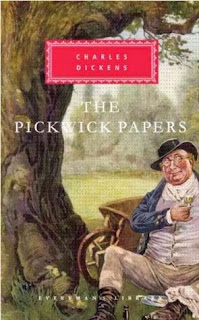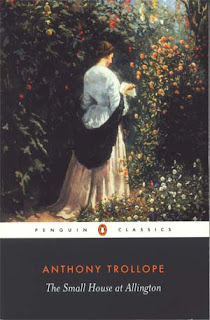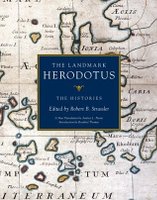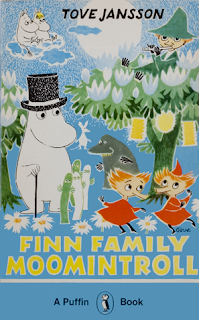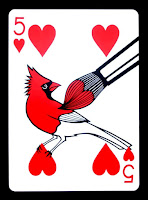“The first ray of light which illumines the gloom, and converts into a dazzling brillancy that obscurity in which the earlier history of the public career of the immortal Pickwick would appear to be involved, is derived from the perusal of the following entry in the Transactions of the Pickwick Club, which the editor of these papers feels the highest pleasure in laying before his readers, as a proof of the careful attention, indefatigable assiduity, and nice discrimination, with which his search among the multifarious documents confided to him has been conducted.”
It’s hardly believable but O’s 2 year read-along of the Pickwick Papers has finally come to a close and I have her to thank for finally being able to finish this 800-page marvel. We read it in installments mirroring its original release which was an enlightening experience in itself. Looking back, I enjoyed reading only 2 to 3 chapters at a time, but the space between them, for me, was too long. It’s not that I necessarily forgot what had happened, but I found that when I picked it up again, I was somewhat disengaged with the characters. It was almost like starting a book over and over again and never really getting traction. If I was to do it over, I’d read a chapter per week instead of three at once and that way hopefully remain more present in the story.
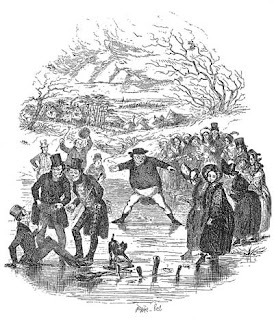 |
| Mr. Pickwick slides on the ice source Wikimedia Commons |
And the book itself ….. ? I quite enjoyed Mr. Pickwick and his marvellous, and at times unbelievable, adventures. At the beginning of the book, Mr. Pickwick, founder and president of the Pickwick Club, decides that he and fellow members, Nathaniel Winkle, Augustus Snodgrass, and Tracy Tupman, will leave London and travel the countryside to discover the wonderful qualities of life, each reporting to the others what they find. Their adventures lead them to saving ladies in distress, getting embroiled in circumstances they only want to avoid, courting offers of marriage, unwanted offers of marriage, interaction with criminals, jail and even love itself. Dickens imbues this novel with his own brand of humour by having an old confirmed bachelor find himself in all sorts of uncomfortable circumstances. From finding himself unexpectedly sleeping in a lady’s bed, to being sued for breach of promise of marriage, poor Pickwick finds his dignified sensibilities tried by unexpected challenges yet he always manages to respond in a measured and honourable manner that increased our respect for this lovable character.
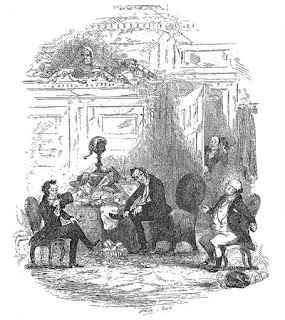 |
| Mr. Pickwick’s first interview with Sergeant Snubbin source Wikimedia Commons |
In Chapter XVI, Pickwick attempts to catch a swindler, Jingle, who is slipperier than an eel. Jingle plans to run away with an heires and by hiding in the bushes outside the girls’ boarding school, Pickwick attempts to subvert the scheme and expose the criminal. But through various misadventures and bumbles, he manages to find himself locked in a cupboard by the headmistress and the ladies of the establishment. Rescued by Sam Weller, his valet, and his friend, Mr. Wardle, Pickwick rains imprecations upon the head of the absent Jingle.
Even more amusing, was the incident of the mistaken beds. Late at night at an inn, Pickwick returns downstairs to retrieve his watch and upon returning, enters the wrong room! He is just settled into bed when a lady enters and begins her own toilette. Horrified, Pickwick reveals his presence and attempts to assure her of his mistake and innocence, but the woman is frightened senseless, and Pickwick makes a quick exit. Not wanting another repeat of the disturbing and undignified experience, Pickwick plans to sleep in the hall, but is once again rescued by Sam. The novel has so many amusing anecdotes, that is has to be read to enjoy them all. And I finally managed it!
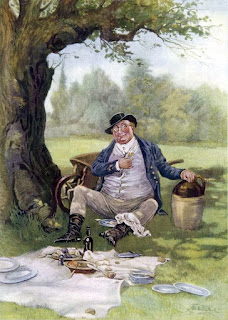 |
| Mr. Pickwick, picnics source Wikimedia Commons |
At the time of the writing of this first novel, Dickens was working as a roving journalist and a reporter of Parlimentary news. After his successful Sketches by Boz, Dickens was called in to write copy for certain illustrated sporting plates created by illustrator Robert Seymour. Dickens soon began to write the instalments before the plates were produced, therefore changing the illustrative focus of the project to storytelling and he never looked back. We all know of his illustrious writing career following The Pickwick Papers and I still have to read quite a few Dickens’ novels yet, as I’ve only completed The Life and Adventures of Martin Chuzzlewit, A Tale of Two Cities, Dombey and Son, A Christmas Carol, David Copperfield, and, a long time ago, The Mystery of Edwin Drood. So many great novels of his still to go. Perhaps a project for 2018 ……???

